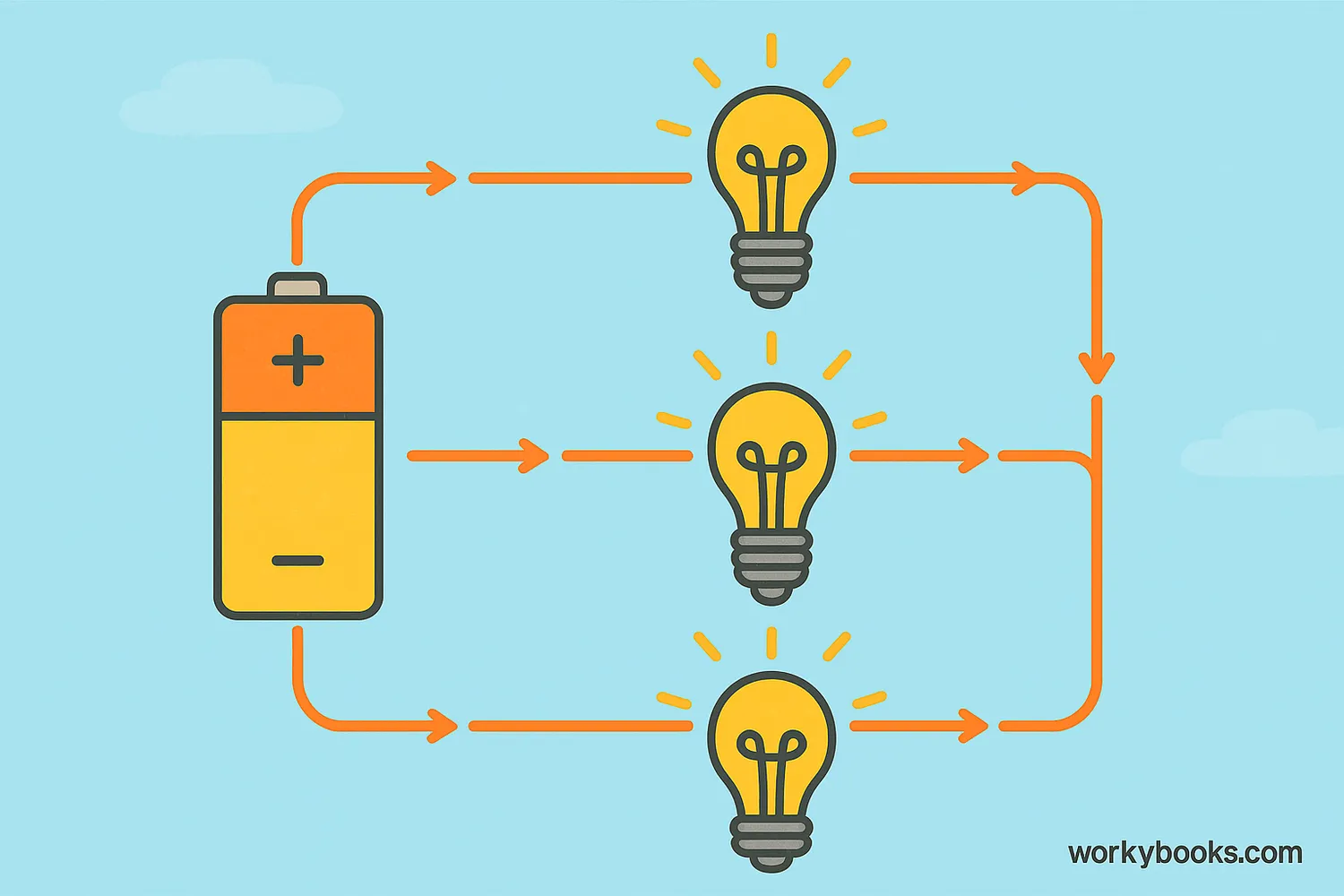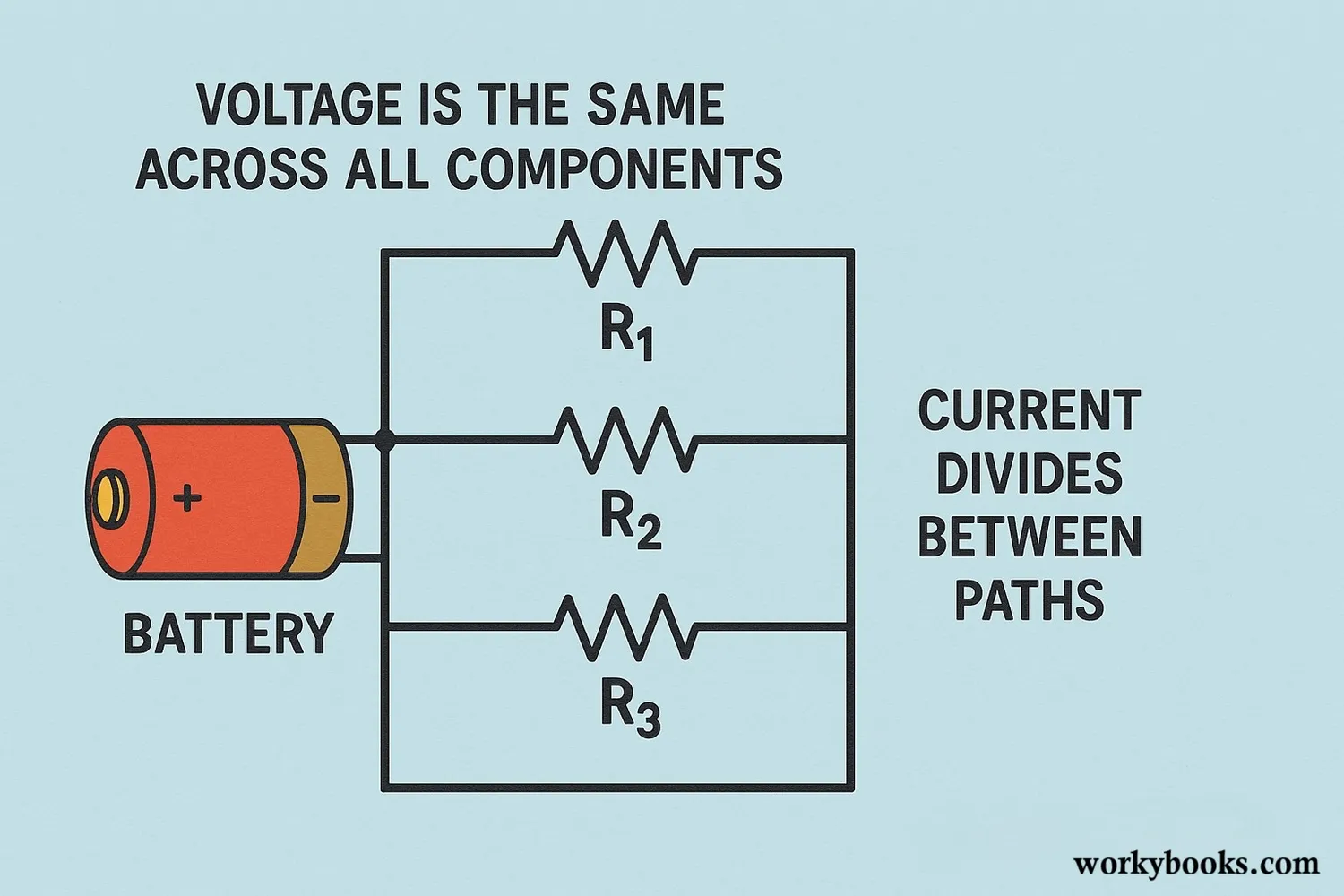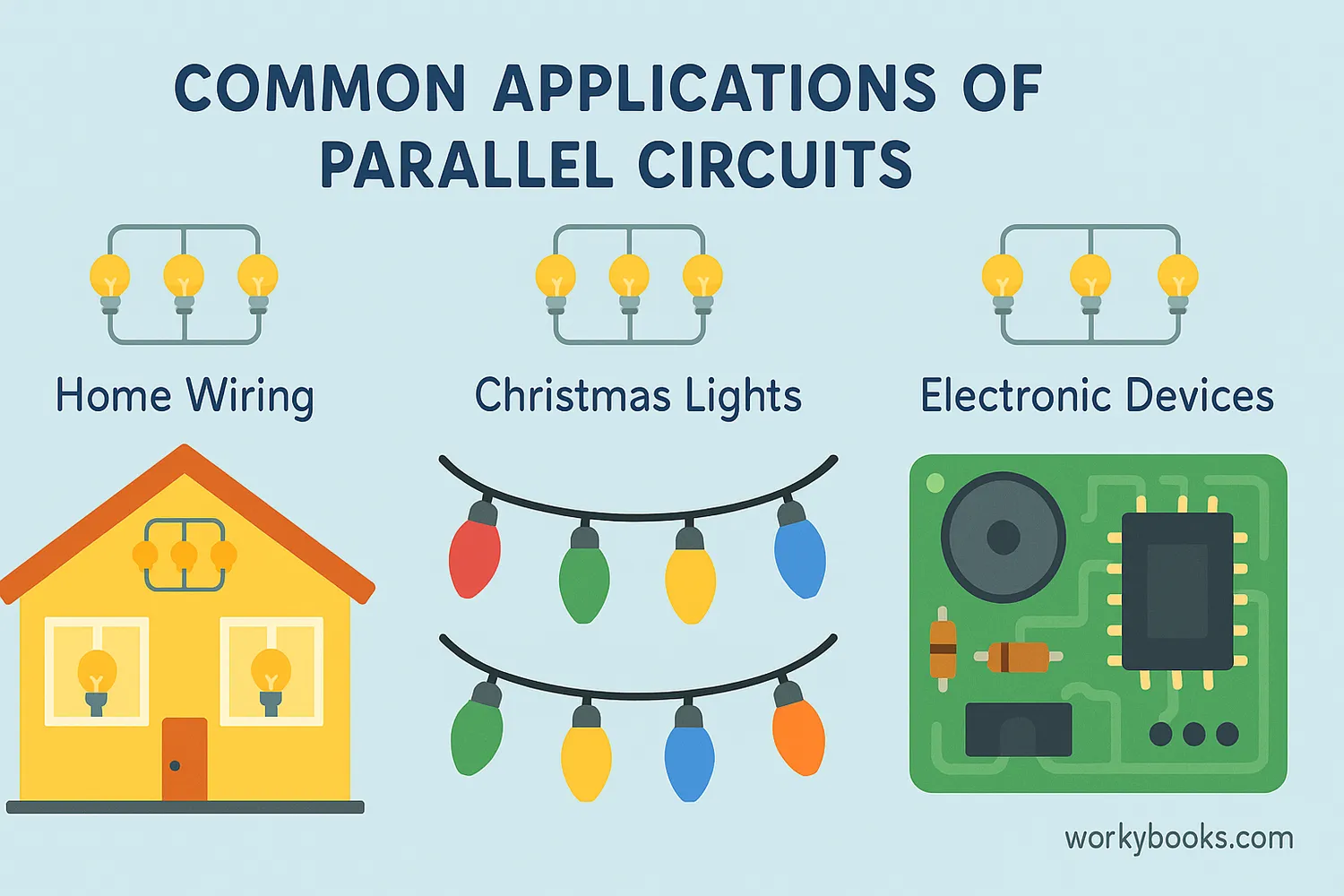Parallel Circuits - Definition, Examples, Quiz, FAQ, Trivia
Discover how electricity flows through multiple paths in parallel circuits!
What is a Parallel Circuit?

A parallel circuit is a type of electrical circuit where components are connected across common points, providing multiple paths for electricity to flow. Unlike series circuits, if one component fails in a parallel circuit, the others can continue working.
Think of a parallel circuit like a multi-lane highway where cars (electrons) can choose different lanes (paths) to reach their destination. Each lane operates independently, so if one lane is blocked, cars can still use the other lanes.
Circuit Fact!
Homes are wired with parallel circuits so that if one light bulb burns out, the other lights and appliances continue working!
How Parallel Circuits Work

In parallel circuits, electricity follows some special rules that make them different from series circuits:
Multiple Paths
Current can flow through multiple independent paths
Same Voltage
All components receive the same voltage
Divided Current
Total current divides between the different paths
Independent Operation
Components work independently of each other
The mathematical relationship in parallel circuits is:
Total Current = Current in Path 1 + Current in Path 2 + ...
Voltage is the same across all components
For resistors in parallel, the total resistance decreases as you add more paths, following the formula:
1/Rtotal = 1/R1 + 1/R2 + 1/R3 + ...
Electrical Insight!
Adding more resistors in parallel actually decreases the total resistance of the circuit, allowing more current to flow from the power source.
Why Parallel Circuits are Important

Parallel circuits are essential in our daily lives! Here's why they're so important:
Home Wiring
Houses use parallel circuits so appliances work independently
Device Reliability
If one component fails, others continue working
Consistent Voltage
All devices receive the full voltage they need
Without parallel circuits, we would have:
• Entire house blackouts from one failed device
• Inconsistent power to different appliances
• No ability to control devices independently
• Difficulties adding new electrical devices
Parallel circuits allow us to design electrical systems that are flexible, reliable, and efficient for modern living!
Parallel Circuit Quiz
Test your knowledge about parallel circuits with this quiz! Answer all 5 questions to see how much you've learned.
Frequently Asked Questions
Here are answers to some common questions about parallel circuits:
Electrical Circuit Trivia
Discover some interesting facts about circuits and electricity!
Historical Connection
Thomas Edison's DC power systems used parallel circuits to deliver the same 110 volts to all electrical devices, which became the standard for home electrical systems.
Natural Parallel Circuits
Your nervous system uses something similar to parallel circuits! Nerve signals can travel through multiple pathways to reach the same destination, making your nervous system more reliable.
Computer Circuits
Modern computer processors contain billions of microscopic parallel circuits that work simultaneously. This parallel processing allows computers to perform multiple tasks at the same time.
Speed of Electricity
While electrons themselves move quite slowly through circuits (about 1 meter per hour), the electrical energy moves nearly at the speed of light (300 million meters per second)!


